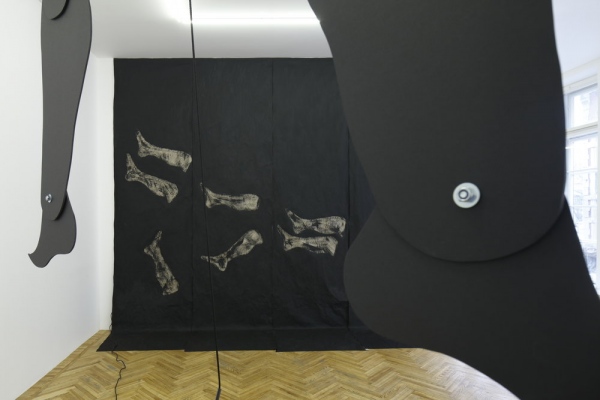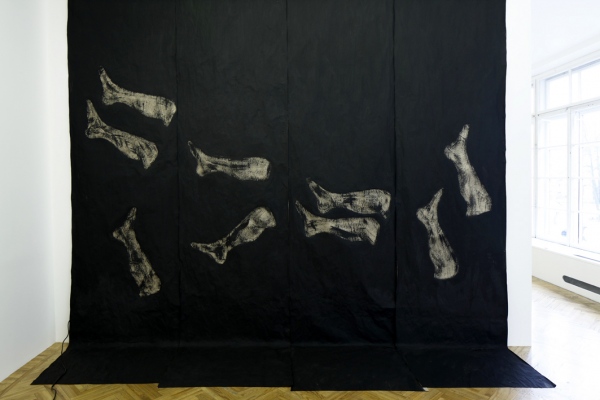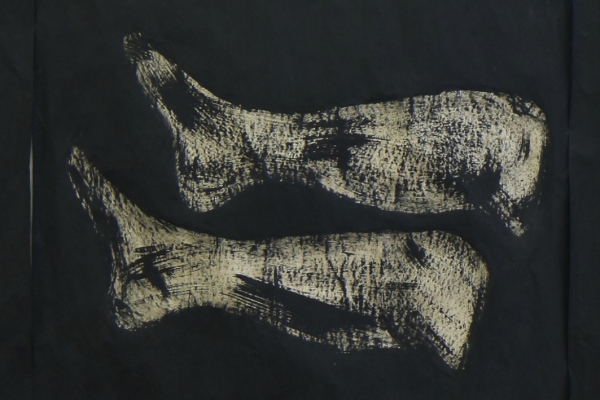-
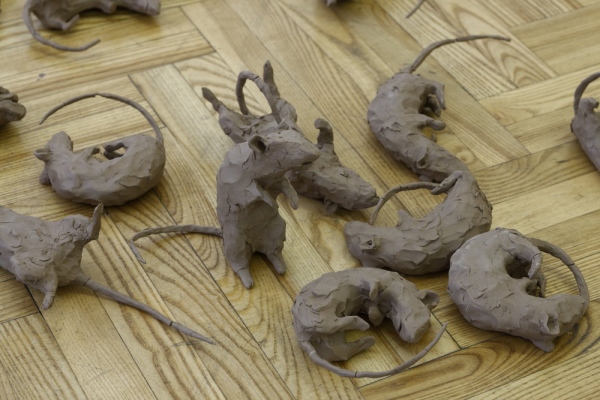
WE - VICTORS, 2019
Clay, metal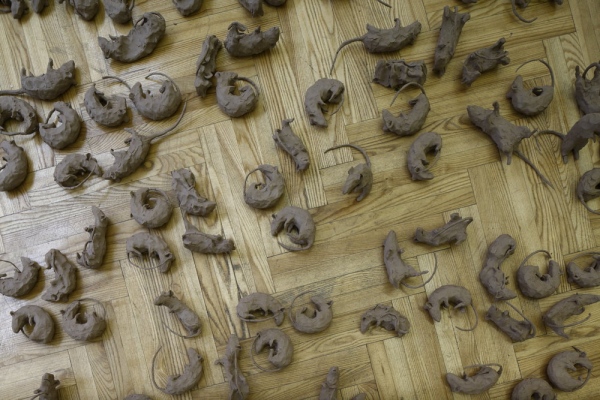
WE - VICTORS, 2019
Clay, metal
Installation view
All photos by Ansis StarksPLAGUE, 2019
For centuries, in the German town of Hamelin official documents were dated from June 26th, 1284 - the day
when 130 children disappeared. Over the centuries, the story transformed into the fairytale of “Pied Piper”,
a rat catcher that rid Hamelin of rats, but after receiving no payment, he lured the children into a cave at the
bottom of a hill called Calvary, just beyond the eastern outskirts of the town. In the German language realm
this tale was popularized by Brothers Grimm while in the English language realm by a poem by Robert
Browning. But what happened to the children? Did they die during a plague epidemic speared by the rats that
had just established themselves in Europe? Or could it be that they were possessed by the Medieval phenomenon
of dancing plague that made people dance for hours, days and even weeks for no apparent reason? Like the
children of Erfurt who jumped and danced all the way to Amstadt in 1237. Or was the fairytale's Pied Piper
in fact count Nicholas von Spielenberg who after recruiting German youths for colonizing the Baltic region
died in a shipwreck while crossing the sea?


